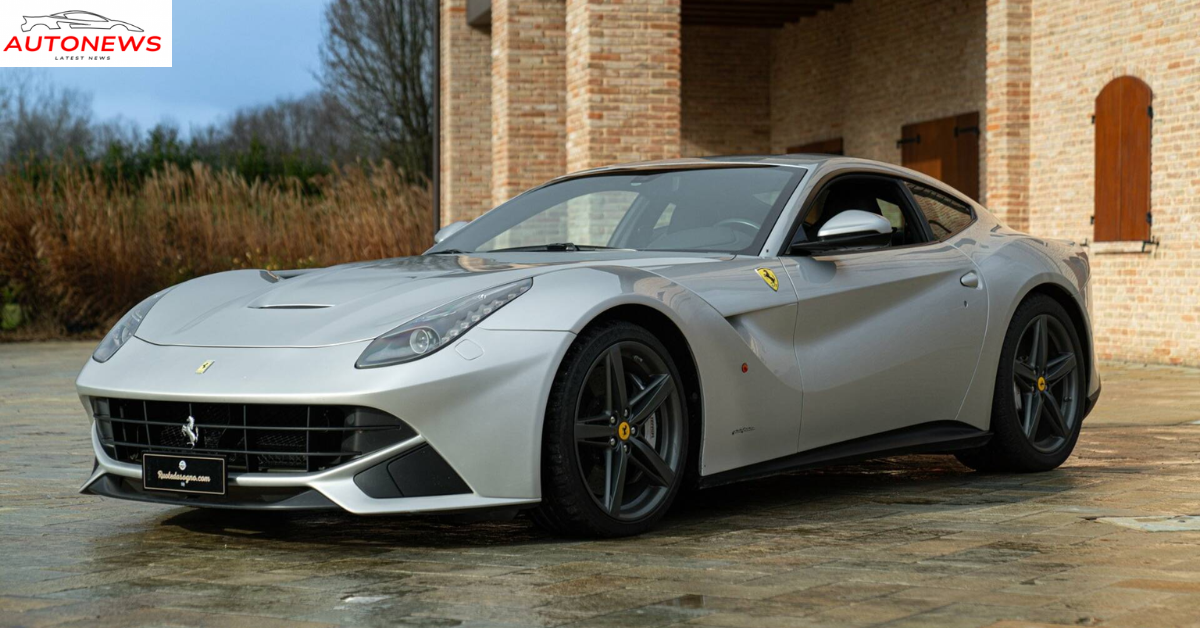When it comes to exotic supercars, few names resonate as strongly as Ferrari. The Italian automaker has consistently delivered vehicles that blend raw performance with breathtaking design, and among its greatest achievements sits the Ferrari F12 Berlinetta—a front-engine, V12-powered grand tourer that is as ferocious as it is refined.
Born from Racing Heritage
Introduced in 2012 as a successor to the 599 GTB Fiorano, the Ferrari F12 was designed with one goal in mind: to push the limits of what a road-legal Ferrari could be. Built with insights drawn from Ferrari’s F1 team and GT racing experience, the F12 represented the pinnacle of naturally aspirated V12 performance. At the time of its launch, it was the most powerful road-going Ferrari ever produced.
Its name, “Berlinetta,” pays homage to Ferrari’s classic GT cars of the 1950s and 60s, yet its styling and performance are anything but retro. Designed by the Ferrari Styling Centre in collaboration with Pininfarina, the F12 combines classic proportions with aggressive aerodynamics and modern elegance.
Heart of a Beast: The V12 Engine
At the core of the Ferrari F12 lies a 6.3-liter naturally aspirated V12 engine, producing a staggering 730 horsepower and 509 lb-ft of torque. This engine revs all the way to 8,700 RPM, delivering an intoxicating roar that few other cars can match. Mated to a 7-speed dual-clutch automatic transmission, the F12 can sprint from 0 to 60 mph in just 3.1 seconds and reach a top speed of 211 mph (340 km/h).
Unlike many of today’s supercars that rely on turbocharging or hybrid systems, the F12 stays true to Ferrari’s purist philosophy. There is no forced induction—just naturally aspirated brilliance that provides instant throttle response and a linear power curve. Every rev feels alive, every gear change electric.
Sculpted for Speed
Ferrari didn’t just aim for performance—they engineered the F12 to be aerodynamically perfect. The car features a system called the Aero Bridge, which channels air from the hood down the sides of the car to increase downforce. There are also active brake cooling ducts that open only when needed, optimizing drag when braking isn’t required.
With an overall dry weight of 1,525 kg (3,362 lbs), largely thanks to its aluminum spaceframe chassis and lightweight materials, the F12 offers an ideal balance between speed and control. The 46/54 weight distribution (rear-biased) enhances cornering stability, while the magnetorheological suspension ensures comfort on rough roads without sacrificing handling precision.
Luxurious Yet Purpose-Built Interior
Step inside the Ferrari F12 and you’re greeted by an interior that strikes a perfect balance between luxury and function. Premium leather, carbon fiber, and aluminum accents dominate the cabin. The seats are sculpted for support during spirited driving but remain comfortable enough for long journeys, honoring the F12’s grand touring intentions.
The driver-centric cockpit features a multifunction steering wheel—complete with the signature Manettino dial that allows drivers to toggle between driving modes (Wet, Sport, Race, etc.)—and a minimalist layout that keeps distractions to a minimum. Unlike some over-engineered interiors, the F12 keeps it focused and intuitive.
Driving Experience: Brutal Precision
What makes the Ferrari F12 truly special is the way it drives. It’s not just fast—it’s ferociously capable, whether you’re attacking a winding mountain road or cruising effortlessly on the autobahn. The steering is incredibly direct, offering crisp feedback that makes the driver feel deeply connected to the car.
The F12 is surprisingly manageable around town, but push it on an open road and it transforms into a track-ready beast. With advanced traction control, electronic differential (E-Diff), and stability systems, it allows for heroic driving while keeping the car planted and safe.
A Future Classic
In the world of modern supercars, where turbochargers and hybrids are becoming the norm, the Ferrari F12 Berlinetta stands as one of the last great naturally aspirated V12s. It’s a car that represents a fading era—where emotion, sound, and mechanical purity reigned supreme.
Though it was replaced by the Ferrari 812 Superfast in 2017, the F12 remains an icon among enthusiasts and collectors. Its combination of timeless design, thrilling performance, and Ferrari pedigree ensures its status as a future classic.

